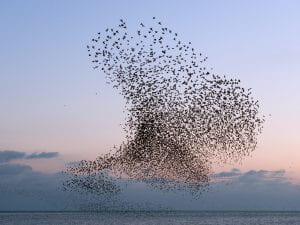
From July 15th – 16th 2021 a group of academics, community partners and independent researchers with an interest in creative practices met to share our thoughts around everyday creativity. CAW supported Helen Johnson (University of Brighton), Owen Evans (Edge Hill), Nick Ewbank (independent researcher), Sonia Contera (Oxford), Louise Mansfield (Brunel), Tony Kalume (community activist and University of Brighton Masters student) and Laharee Mitra (University of BrightonDoctoral candidate) to spend time drafting a network funding bid on the topic. Our aim is to use this network to build understandings and applications of everyday creativity that support its relevance and accessibility to all citizens, regardless of social class, ethnic background, (dis)ability, gender or training/expertise.
Creativity is typically defined as something that is both novel and useful/meaningful. This raises a number of questions, however, such as: To whom must it be useful? Whose frameworks of meaning are we referring to? Must ‘novelty’ mean a total departure from what has gone before and is this even possible? Could creativity represent incremental change instead? Where do collaboration, community and co-production fit into this model? And – what domains can we understand creativity as operating within?
Much of the creativity literature to date has focused on elite creativity within the arts. This eclipses creativity in other domains, such as science, technology, creativity in the home and creativity in nature. It also obscures that which is novel and meaningful to that person in that particular moment. This ‘everyday creativity’ is characterised by actions that are routine/mundane and often carried out without the intention of being creative. Everyday creativity has been understood in terms of both little ‘c’ and mini ‘c’ creativity, with the former being focused on observable creative actions and products and the latter on more fleeting “interpretive and transformative aspects of thought” (Silvia et al, 2017; and see Richards, 2007, 2010).
While little and mini ‘c’ creativity are helpful concepts, however, they derive from the four ‘c’ model (e.g. Beghetto and Kaufman, 2007), which places them firmly at the bottom of a hierarchy below Big ‘C’ and Pro ‘C’ forms that are associated instead with professional, institutionally-approved and elite creative products. Furthermore, our understandings of creativity tend to be dominated by a neo-liberal Western model which prioritises individual actions and emphasises creative products over processes. Everyday creativity is thus a topic of hot debate in a field characterised by multiple and conflicting definitions of what creativity is, where it resides, and who has the authority to determine its presence/quality.
There is a pressing need, then, to consider alternative understandings of creativity from multiple disciplines, fields and cultures, to decolonise and democratise creativity with a focus on the everyday, and to broaden the conceptual lens beyond the arts. These are issues we aim to explore further as our work with one another moves forward. We look forward to doing so in close partnership with the Centre for Arts and Wellbeing.
References
Beghetto, R. A., & Kaufman, J. C. (2007). Toward a broader conception of creativity: A case for “mini-c” creativity. Psychology of Aesthetics, Creativity, and the Arts, 1(2), 73–79. https://doi.org/10.1037/1931-3896.1.2.73
Richards, R. (2007). Everyday creativity: Our hidden potential. In R. Richards (Ed.), Everyday creativity and new views of human nature: Psychological, social, and spiritual perspectives (pp. 25–53). American Psychological Association. https://doi.org/10.1037/11595-001
Richards, R. (2010). Everyday creativity: Process and way of life—Four key issues. In J. C. Kaufman & R. J. Sternberg (Eds.), The Cambridge handbook of creativity (pp. 189–215). Cambridge University Press. https://doi.org/10.1017/CBO9780511763205.013
Silvia, P. J., Nusbaum, E. C., & Beaty, R. E. (2017). Old or new? Evaluating the old/new scoring method for divergent thinking tasks. The Journal of Creative Behavior, 51, 216–224. https://doi.org/10.1002/jocb.101




Leave a Reply